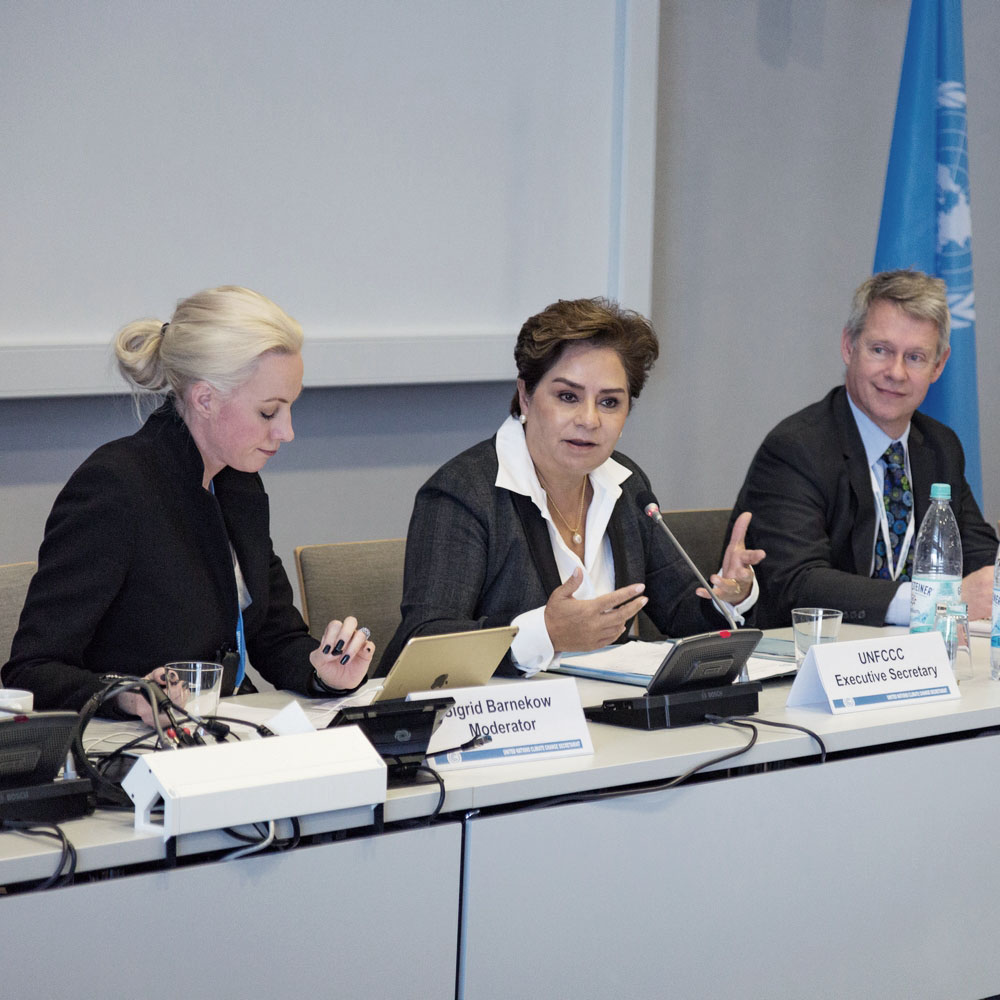On January 16th and 17th the first global discussion on climate action within the fashion sector was held at the UN Climate Change secretariat (UNFCCC) in Bonn. It is evident that climate change is the biggest threat to humanity, which is why awareness and action urgently need to increase. Can industry sectors like Fashion mobilize and help drive further change?

Sigrid Barnekow, Patricia Espinosa and Niclas Svenningsen
Clothing is relevant to us all and the Fashion sector has an enormous power of influence. A lot of efforts are already initiated around the world, with fashion brands and stakeholders leading the way for reduced climate impact. Nevertheless, more people and companies within the sector need to be aware and act. The total greenhouse gas emissions from textiles production is calculated at 1.2 billion tons annually, which is more than all international flights and maritime shipping combined. With these numbers in mind it is evident that the fashion industry is standing before a paradigm shift.
“I believe we stand at a turning point in history. For the first time, humans are no longer just affected by weather cycles, we are affecting those cycles—and suffering the consequences of doing so.”
— Patricia Espinosa, UN Climate Change Executive Secretary
38 representatives from the fashion industry were gathered in Bonn to assess the possibilities of a joint future climate action program. The two days Fashion Dialogue focused on the global scale of collaboration to enable a systemic change and work towards mobilizing existing initiative as a larger and joint project. The Amongst the participants there were international brands such as Adidas, C&A, Hugo Boss, H&M and FIlippa K together with representatives from fabric manufacturer, recycling associations and fiber innovators. Mistra Future Fashions Sigrid Barnekow was invited to partake in the discussions and acted as moderator next to Patricia Espinosa, UNFCCC Executive Secretary and Niclas Svenningsen, Manager for Strategy & Relationship unit at UNFCCC.
Among other things the discussion revolved around possible environmental targets, an online platform to open up further dialogue as well as enhanced engagement with policy makers at national and international level. Furthermore it was identified that more companies and organizations need to be engaged. At present, the majority of brands, suppliers and fashion stakeholder are not participating. Producing one single garment today requires an extensive supply chain including several companies in multiple countries. That is why the sector needs to mobilize together and consider every step along the process. Discussed was also a possible development of a common narrative and communications plan, including global meetings and conferences to engage all players in the field.
The next step in the process will be preparation and execution of a report by UN Climate Change secretariat to share with stakeholders in the fashion sector. This report will be the first step towards a global climate action program combining existing environmental initiatives within the fashion sector. Niclas Svenningsen, Manager for the Strategy & Relationship unit at UNFCCC, highlighted the fact that in order to agree on such a program all parts of the fashion system needs to be taken in consideration. “The fashion sector has a huge challenge – complex supply chains from primary producers to retail shops, and fast-growing demand with limited recycling.” To enable a systemic change and work towards fully closing the loop collaboration across borders and industries are crucial.
The work will proceed within the UNFCCC and Mistra Future Fashion is honored to be a part of the process. If interested to partake in the dialogue, please visit the UNFCCC.



